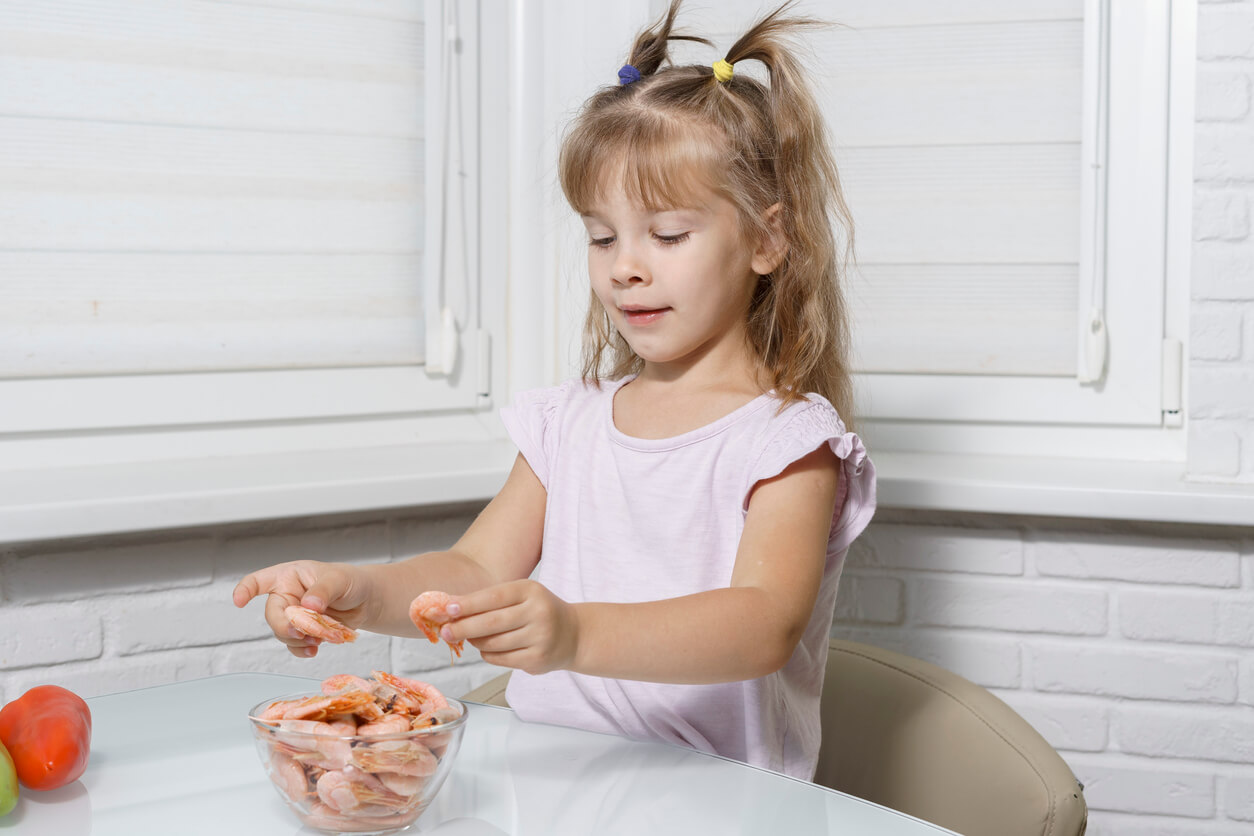When Can Children Eat Seafood?

Seafood has a high nutritional density. For this reason, it’s a suitable food group to include in many diets. However, there are a number of limitations regarding its intake. Babies, for example, shouldn’t consume seafood. We’re going to tell you when children can eat seafood safely and explain why it’s important to wait.
First of all, it should be noted that the untimely inclusion of certain foods in the diet of babies can increase the risk of developing allergies or other autoimmune problems. For this reason, it’s essential to always respect the times and indications of your child’s pediatrician.
The inclusion of seafood in the diet of children
Complementary feeding begins at 6 months of age. At this time, some seafood, such as certain fish, can be included in the diet. However, seafood shouldn’t be offered to children until they’re at least 2 years old. Otherwise, they could develop allergies, which would condition their diet for life.
It should also be borne in mind that not all the products included in this group may be suitable for children. It’s always preferable to start with cooked or grilled shrimp or prawns. In addition to having a taste that’s very well accepted by little ones, they don’t have too many shells that can cause choking. With time, other types of preparations that include crab or clams can be included in the diet, although both foods require certain skills to be eaten without risk.

The benefits of seafood
Besides talking about when children can eat seafood, we also want to tell you about some of the benefits derived from the consumption of this food group. However, it’s important to make sure that it’s included in the context of a balanced and varied diet. If there’s a deficit of essential nutrients, a chronic disease could end up developing.
They improve muscle function
Seafood is capable of providing proteins of high biological value but has few calories. These elements present all the essential amino acids that the body isn’t able to synthesize on its own. In addition, they score well in terms of digestibility, so utilization will be optimal.
According to research published in the Annals of Nutrition & Metabolism, it’s essential to ensure that during the early stages of life, protein intake is optimal. At this time, requirements are high due to the development and growth of the body. To generate tissues, it’s essential that these nutrients are present in sufficient quantities.

Seafood prevents the development of thyroid problems
In order to ensure the proper functioning of the thyroid gland, it’s important to ensure that the supply of minerals is adequate. Both iron and iodine intervene in the physiological processes carried out in this organ and modulate the synthesis of thyroid hormones. This is evidenced by a study published in the journal Biological Trace Element Research.
In fact, iodine is essential to avoid hypothyroidism in the medium term. Fortunately, seafood is a source of this mineral, like many other foods from the sea. In the event that the disease has already developed, monitoring the intake of this nutrient is essential.
Children can eat seafood after the age of two–not before
As you’ve seen, seafood is a group of foods with health benefits. However, they can’t be included in the diet of children before the age of two. Waiting until this point is necessary in order to avoid the appearance of allergies that can condition the child’s diet for life.
Initially, it’s a better idea to offer products that are easy to digest and have a low risk of causing autoimmune problems, such as lean meats and fish. As the child gets older, the spectrum of foods can be increased to ensure variety in the diet.
Finally, when introducing seafood to the diet, it’s better to opt for the pieces that are easier to eat so that the child gets used to them. You can even prepare soups with the heads or shells of certain products such as crabs. This way, a broth with a powerful flavor and high nutritional density will be obtained.
All cited sources were thoroughly reviewed by our team to ensure their quality, reliability, currency, and validity. The bibliography of this article was considered reliable and of academic or scientific accuracy.
- Richter, M., Baerlocher, K., Bauer, J. M., Elmadfa, I., Heseker, H., Leschik-Bonnet, E., Stangl, G., Volkert, D., Stehle, P., & on behalf of the German Nutrition Society (DGE) (2019). Revised Reference Values for the Intake of Protein. Annals of nutrition & metabolism, 74(3), 242–250. https://doi.org/10.1159/000499374
- Luo, J., Hendryx, M., Dinh, P., & He, K. (2017). Association of Iodine and Iron with Thyroid Function. Biological trace element research, 179(1), 38–44. https://doi.org/10.1007/s12011-017-0954-x
